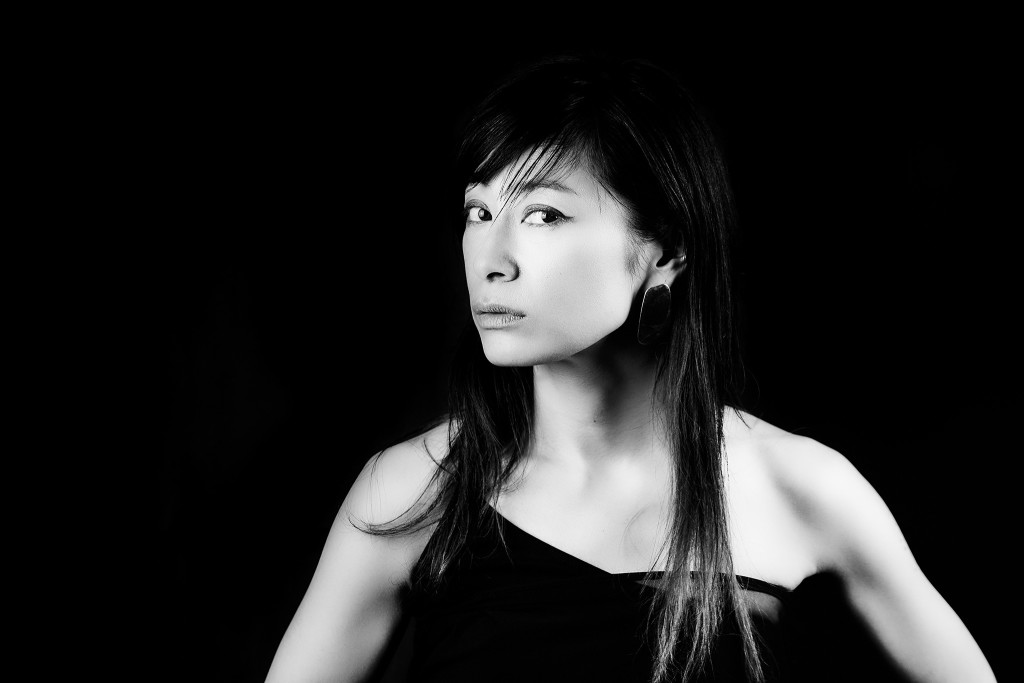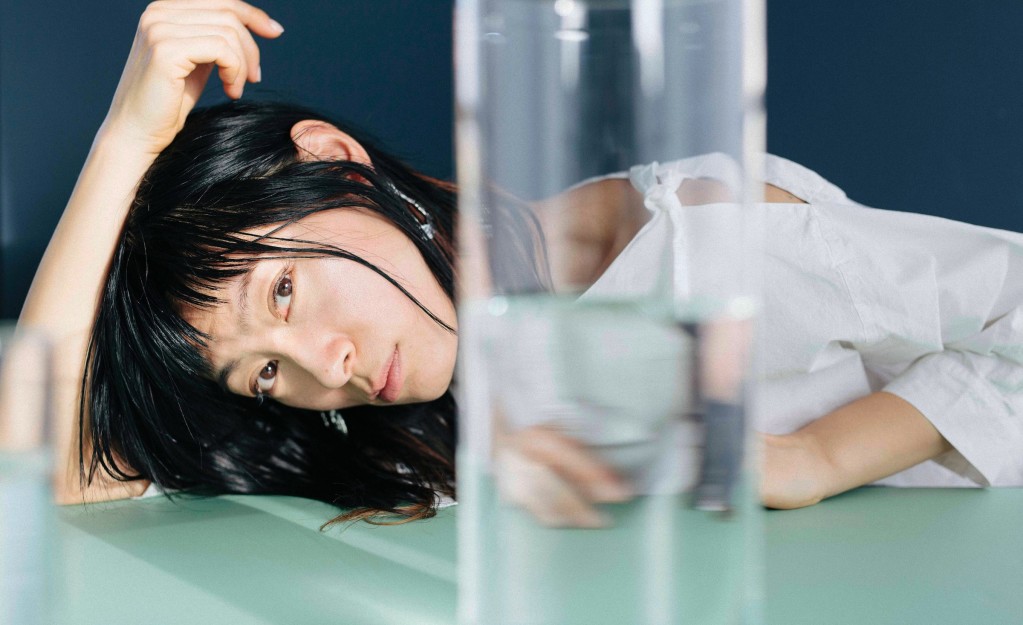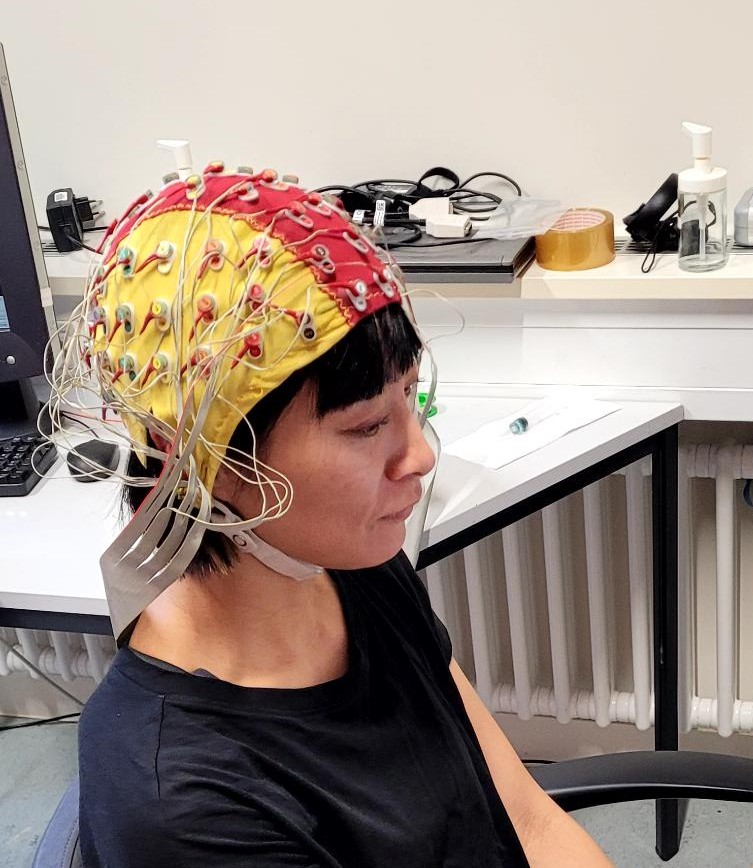Kyoka, the innovative producer and artist (Raster-Noton), has electrodes attached to her head with good reason. In collaboration with neurologists, she’s exploring the power of sound in mood and thought. She talks to us on the eve of a premiere at Berlin’s Signals Festival.
That show is carefully labeled “in testing” – as in this is an active experiment. (A more developed version is due in December in Tokyo, at MUTEK.JP.) But we’d expect no less of the Japanese-born artist, whose dynamic improvisatory shows always push performance to the edge.

With emotion at the heart of this show – combining brain waves with Elektron instrumental performance – I caught up with Kyoka to share some of her own thoughts and feelings. This interview is supported in part by Signals Festival – this weekend in Berlin (including Kyoka’s live premiere);
https://catalyst-berlin.com/about/signals
https://catalyst-berlin.com/about/signals-festival-2022-liveperformances
We also can share this recent work:
Exhibition at Tokyo International Airport “Moment in Composition”
Sound artist: Kyoka
Art work by Seiichi Sega
Artisans of family crest design and painting: Shoryu Hatoba and Yohji Hatoba
Creative Coordination: MUTEK.JP
More information: https://www.omnibusjp.com/supersymmetry/works/2020_2.html
CDM: What is the current state of your mind at this moment? How is your feeling – particularly as there has been lots of change around us?
Kyoka: Achievement and confidence for my own sincereness and development. (even self-satisfaction. )
Since I haven’t seen it yet – looking forward to the premiere – tell us about this project! What will it look like; what will we get to hear? What was the concept behind it?
At this time, I’m still in a testing situation so I can’t really say yet how it’ll look and sound! But the next version will be shown at Mutek JP in December as a collaboration with visual artist Shohei Fujimoto. I’ve worked with him since 2020 for FACT magazine, an installation in Montreal, and a live set for Korea and MUTEK.
Shohei’s concept and my concept is for distinct for each of us in our solo activity. But my side of concept is to learn how the brain is reacting to external signals, to learn how external signals call memory and emotion back.
For example, I would play some typical international names randomly. It has to have a lot of chances to remind people of something. When it connects to some memory, that input might travel into their brain, their memory or consciousness.
It’s how the brain likes to save energy, but how it works hard – how attention is pulled, etc. And how I can have trusted measurement and data via today’s technology.
What part could be fantasy or guessing at some future truth? What could be the truth as of today? I want to try to find the balance between them working as individual humans and the device called “human being” — both. Then, I put all that discovery into sound and space. My goal might be to make a black box — the most calm and emotional black box room 🙂 Anyway, at this time, I’m still testing. Let’s see how we feel or discover the next step.

You’re regularly transforming the language of how you produce, I think. What’s the meaning of ‘New Music Syntax’?
Revisiting music theory inspired by brain structure. And discovering the new direction of music theory, system, and template.
And I would like to call this “New Music Syntax.”
You were working with neurology, yes – how did this come about? You were able to contact scientists and get some feedback from them?
Yes. Basically, it started as my hobby to learn about it. It has so much potential for how I live my life… for example, understanding my own emotional system is very useful to stay calm. I personally feel it could be a kind of therapy.
Anyway, my first motive was when I saw children were super fascinated by my installation called score in Zaragoza, Spain, 2017. One of them told me, “I got life energy.” And with those words from them, I got more life energy.
And it was the first time for me to think about how the external signals between people are boosting each other. I used to just think that they are motivating each other. But at that time, I felt something more than motivation. And I really started to consider how external signals can boost one another in the most fun way. This is why I am totally into neurology now — and one thing I’m good at in my life seems sound or music — so I’m combining these all to create a new toy.
It has so much potential for how I live my life… for example, understanding my own emotional system is very useful to stay calm.

What’s in your musical practice that you treasure the most, the one thing you can’t be without?
The moment when I can suddenly go into the zone when I manipulate sound.
I know you work a lot in an improvisatory way when you play, and it’s not always what you did in the studio or what you did in the last performance – it’s part of why I like seeing you live! How do you approach your instruments live versus the way you use them in the studio?
In the studio, I try to use them in the most proper way, according to the manual.
At the improvisation, I often purely forget how to use them… and often great accidents happen, and I keep those moments. Most of the time, I review how/why that happens at home, and often I can take it as my new tool or set up 🙂
We’ve talked about the instruments you use in the past – so I understand you’ve reorganized your studio around some Elektron gear. What are you using? Why did you select this for live?
I personally feel I have strong connection with Elektron. The reason why — I know Elektron gear, for sure. But also, I ‘ve often been in Sweden and I have chance to meet people from Elektron.
I’ve played the Octatrak, Analog Four, Analog Rytm, Digitakt and Syntakt when I had a streaming event from the EMS Stockholm studio to Dommune in Japan. [Dommune regularly hosts streaming events.] I think this was the first contact with the Elektron people.
Also, I used to be in Gothenburg for my artist residency program. And I had a chance to visit them and interview them about their equipment while they were in development [it was Digitakt at the time]. When Digitakt launched, Sound & Recording magazine in Japan published the story I wrote. And the experience helped me understand perfectly, more deeply, about Digitakt. So, even now, I feel a special affection for Digitakt. 🙂 I made one sample drum set for it, mostly from Buchla modular sounds. And as for Syntax, I made a demo song to celebrate its launch.
Anyways, all gear from them definitely has a beautiful, strong, and impressive sound which gives me magical moments. I trust Elektron and the people there, always.
What’s your biggest fear when you play? When you’re in the studio?
My fear for live is that I cannot share/feel any connection with the audience.
In the studio, I fear losing time just for non-impressive creations.
You’re heading back to MUTEK.jp in December – what are your aspirations for the coming months?
Studying and nerding is what I’m interested in!
Anything to add?
I would like to say “Thank you very much” to the people who have given me inspiration and also helped me to proceed with this project by providing special equipment which I could never reach to use by myself.
Special thanks to:
Dr. Tatsuya Daikoku from the University of Tokyo
Dr. Timo Torsten Schmidt from the Freie Universität Berlin, Center for Cognitive Neuroscience Berlin
(alphabetical order)
Check Kyoka’s performance this weekend (29 October, 22:05 mainstage) at Signals Festival.